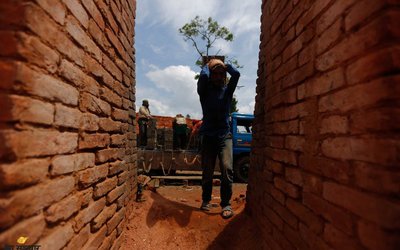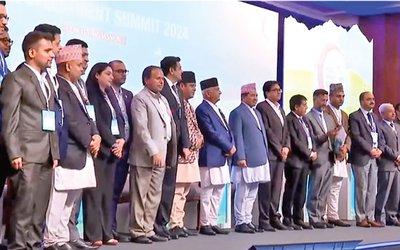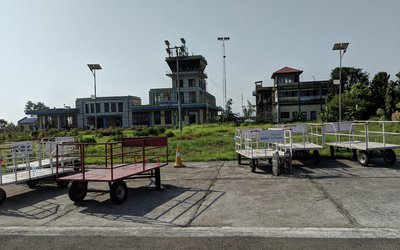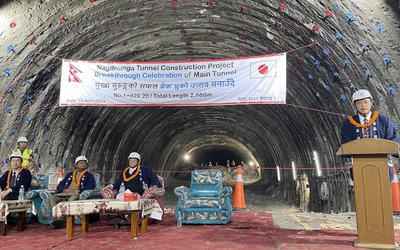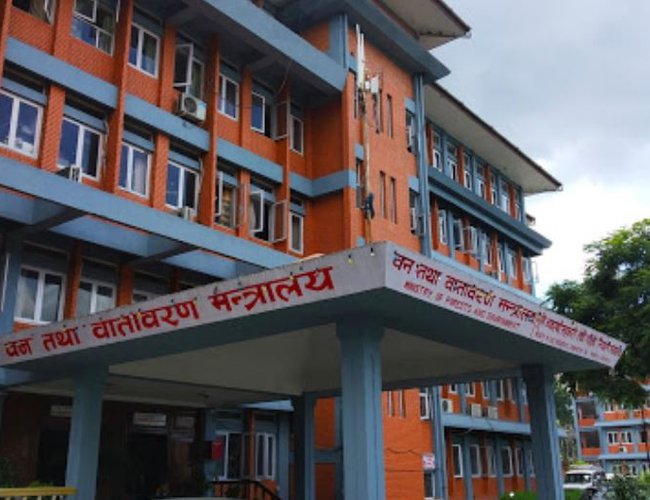
The Government of Nepal renamed the Ministry of Forests and Soil Conservation (MoFSC) into the Ministry of Forests and Environment (MoFE) in 1992 with any additional environmental functions at the time of Minister Shailaja Acharya and it was again renamed as MoFSC before the establishment of the Environment Protection Council in 1993. In September 1995, the Government, led by Prime Minister Mr. Sher Bahadur Deuba, established the Ministry of Population and Environment (MoPE) with defined functions. The MoPE survived for a decade and was dissolved in 2005. The Ministry of Science and Technology was renamed the Ministry of Environment, Science and Technology (MoEST) in 2005. Merging and separating ministries continued till 2018 by forming the Ministry of Environment (MoE), MoEST, Ministry of Science, Technology and Environment (MoSTE), MoPE and finally MoFE without any major changes on functions and responsibilities. For the last two and half-decade, the environment was dealt with as a 'potato' by mixing with population, science, technology, and forests. The record shows a higher level of dedication of the MoE in discharging its functions.
Prior to the establishment of MoPE, the Government implemented the Environmental Impact Study Project headed by Mr. Sushil Bhattarai, a seasoned, committed and dedicated forester since 1981. Mr. Bhattarai started a government-funded project with slightly over NRs 1 lakh (annual budget, including salary) and contributed substantially in raising awareness at different levels even by organizing seminar annually during King's visit to developing regions, introduced Environmental Impact Assessment (EIA) process, convinced the policy-makers to include environment-related policies in the periodical plans (6th & 7th plans), and drafted national environmental policy and a bill. Project budget reached to NRs. 6 lakhs and 24 thousand in 1987. Then, separate Environment Divisions were established in the National Planning Commission in 1988, and the Department of Soil Conservation and Watershed Management in 1987.
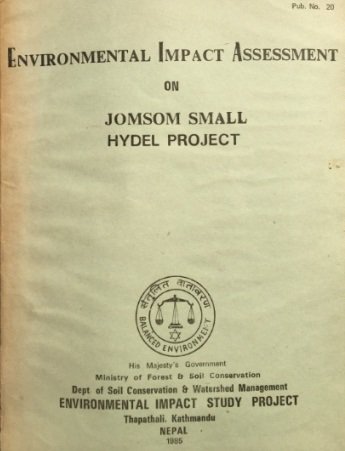
Environment Division of the Department was later moved to MoFE in 1992. The contribution of Dr. Mohan Man Sainju, Prof. Upendra Man Mall and P.P. Shah was instrumental in including environmental policies in the periodical plans in the 1980s. It took nearly one and half-decade to establish MoPE in 1995 with defined roles and responsibilities. The contribution of Dr. Arju Deuba was recognized in establishing the MoPE.
Excluding Prime Ministers and Deputy Prime Ministers having an environmental portfolio for a shorter period, a total of 28-ministers led the Environment Ministry with one repetition of Mr. Prakash Man Singh, first Minister for Population and Environment in Nepal. Ten and 12 ministers represented Nepali Congress and Communist Parties (UML and NCP, including 5 ministers from NCP-united) respectively, and the remaining 6 were from other Parties. Almost all got the environment portfolio when they became the minister for the first time. During this period, 23 secretaries served the environment ministry. With this in the background, this note memorizes the key outcomes of the political (M) and administrative (S) leaders on the environment (first initiative) during the last 25 years.
- Mr. Prakash Man Singh (M) and Mr. Surya Nath Upadhya (first Secretary) were instrumental in formulating, negotiating and getting approval of the organizational structure of MoPE with multi-disciplinary human resources, and the Environment Protection Bill (1996) from the Parliament.
- Ms. Vidya Devi Bhandari (M) is remembered for enforcing the Environment Protection Rules (EPR, 1997) as of her 100 days of work and initiating Rhododendron conservation in Milke Danda.
- Mr. Purna Bahadur Khadka is credited for officially publishing the State of the Environment Report in 1998 for the first time in Nepal, and mobilizing Environment Protection Fund.
- Mr. Bhakta Bahadur Balayar, also remembered as 'Tempo Minister' proved himself committed and dedicated leader with Dr. Govinda Raj Bhatta (S) in banning the use of diesel-operated three wheelers from Kathmandu, Pokhara and Lumbini areas, releasing Nepal Vehicle Mass Emission Standards (BS 2056), and introducing micro-buses in Nepal, including the issuance of Rules concerning the import of Ozone Layer depleting substances.
- During the Royal regime, MoPE was dissolved in 2005. Mr. Dev Raj Regmi was the secretary and Mr. Lok Darshan Regmi was the chief of the Environment Division at that time. Mr. Lok D. Regmi is credited to make the Environmental Assessment Section technical in 2006 in MoEST and initiating carbon trade in 2005 by registering biogas CDM (Clean Development Mechanism) project and selling carbon credit at the rate of US $ 5 per ton of CO2-eq (same rate in REDD+ in February 2021). Mr. Bal Krishna Prasai (S) was instrumental in revitalizing the climate change activities in 2007 as a Party to the UN Framework Convention on Climate Change (UNFCCC).
- The Climate Change Section was established in 2008 during the time of Er. Ganesh Shah (M) and Mr. Umesh Prasad Mainali (S).
- Under the leadership of Thakur Prasad Sharma (M) and Dr. Udaya Raj Sharma (S), Nepal prepared negotiating issues for Copenhagen Climate Change Conference and organized a regional conference on Kathmandu to Copenhagen. A Cabinet meeting at Kalapatthar drew the attention of the international community on the adverse effects of climate change in Nepal Himalaya. Mr. Deepak Bohara (M) actively mobilized in-country works and climate rally in Copenhagen in 2009.
- Concerted efforts, commitment and dedication of the Environment Minister (Mr. Sharma) and two technical secretaries - Dr. Udaya Raj Sharma and Dr. Ganesh Raj Joshi - were remarkable in institutionalizing climate change activities in Nepal by initiating and establishing the Climate Change Management Division of technical nature in MoE in early 2010. Furthermore, Minister Sharma and Dr. Joshi showed leadership while adopting National Adaptation Programs of Action (NAPA) in 2010 and the Climate Change Policy in early 2011.
- Approval of the National Framework on Local Adaptation Plan for Action (LAPA in November 2011) and establishment of the Department of Environment (DoE) in July 2012 happened during the time of Mr. Hem Raj Tated (M), and Mr. Krishna Gyawali (S).
- Mr. Prakash Mathema deserves appreciation for leading the LDC Coordination Group in the UNFCCC process in 2013 and 2014, except Lima session in a professional manner. The final session of Nepal's chairmanship was professionally coordinated and negotiated by Dr. K.C. Poudel (S) in Lima, Peru in 2014. The NAP formulation process was initiated in 2015 and the intended Nationally Determined Contribution (iNDC) was prepared and submitted in early 2016 during the time of Dr. Poudel.
- Mr. Shakti Bahadur Basnet (M) and Dr. Biswa. N. Oli (S) led the environment for the longest period in Nepal. During this period, separate action plans on clean environment campaign (2018) and air quality management in the Kathmandu Valley (2019), and a National Environment Policy (2019) was released. The EPA (2019), EPR (2020), climate change policy (2019) and LAPA framework (2019), and second NDC (2020) were issued after 3-tiers of government in Nepal but they were first issued in 1996, 1997, 2011 and 2016 respectively.
- Two unnatural events happened. Nepal made a statement in English with a Nepali script in Paris in 2015. The MoPE Secretary was sent 'back to Nepal' before the remaining two days of the Fiji/Bonn Climate Change Conference in November 2017. Interesting stories of the last 4 decades remain undocumented on the environment and climate change.
Many people contributed to developing and implementing policy and legal instruments with guidelines and manuals, in establishing and/or strengthening institution(s) and internalizing environmental assessment systems and climate change activities in Nepal. At present, environmental institutions have been sufficiently staffed, equipped and matured; necessary policies and legal instruments, and acceptance on the urgency of protecting and sustainably utilizing environmental goods and services are in place; necessary funding is available from bilateral and multilateral sources; and knowledge is sufficiently generated and documented. Nepalese universities are producing a good number of human resources. Nepal has made 'huge' national and international commitments in ensuring environment conservation and advancing climate change activities. People have a strong desire to participate in improving the environmental quality but there is a big gap between 'commitments and actions' and mobilization of 'knowledge-based' human resources. In many cases, needs for revising policies, guidelines, guides, etc are raised before their implementation along with the change in leadership.
Nepal has 'golden opportunities' to benefit from the environmental assessment process, water and air quality improvement, and climate change adaptation but requires to translate commitments into actions professionally.

Batu Uprety
Former Joint-Secretary and Chief of Climate Change Management Division, Ministry of Environment (then), and former Team Leader, National Adaptation Plan (NAP) formulation process. E-mail: upretybk@gmail.com
- Dialogue On Mountains And Climate Change Planned
- Apr 19, 2024
- Institutional Response And Leadership on Climate Negotiations
- Mar 28, 2024
- The Wire Without A Current
- Mar 20, 2024
- Call For Degazetting the Shivapuri-Nagarjun National Park
- Feb 08, 2024
- Advancing Need-Based Adaptation Options
- Jan 14, 2024







